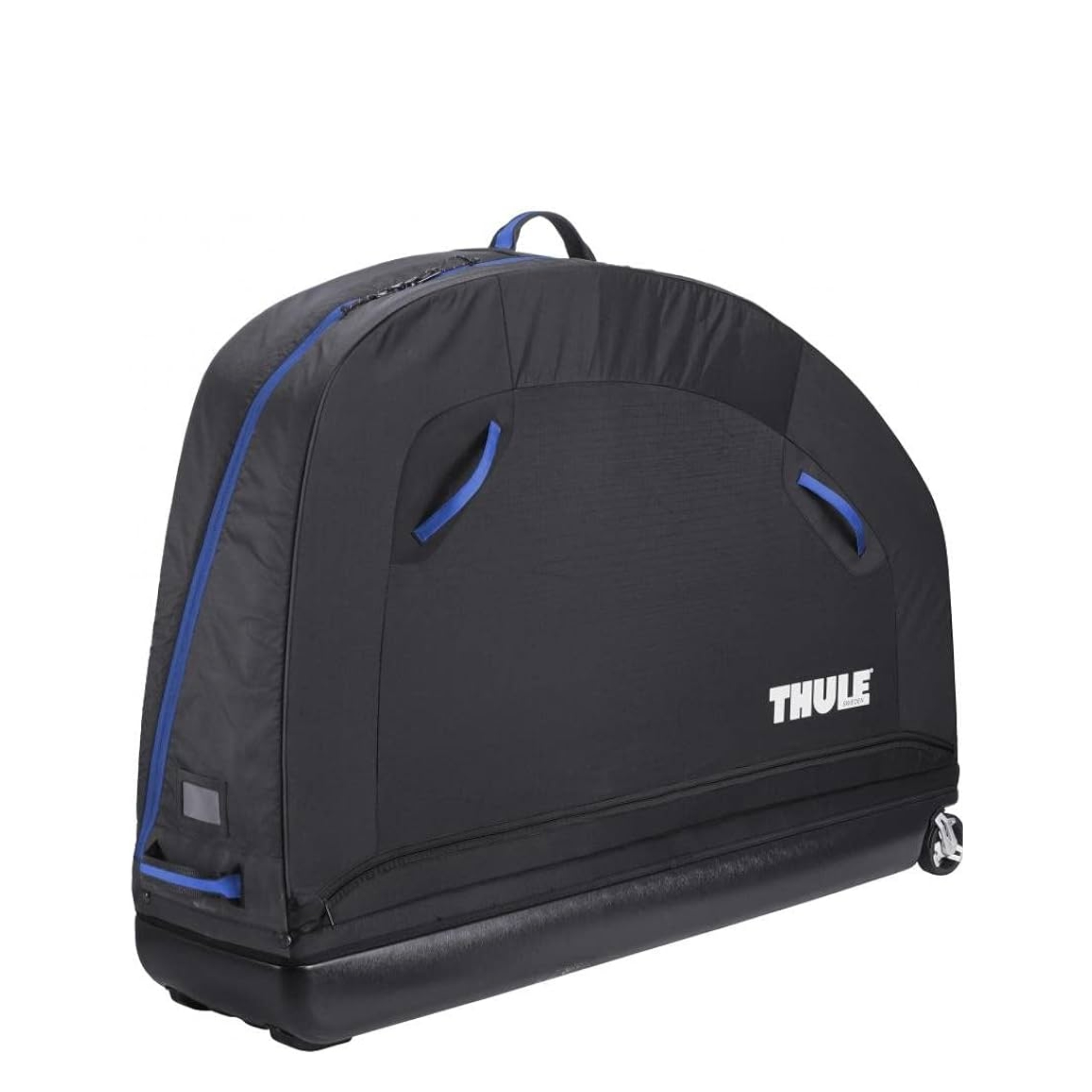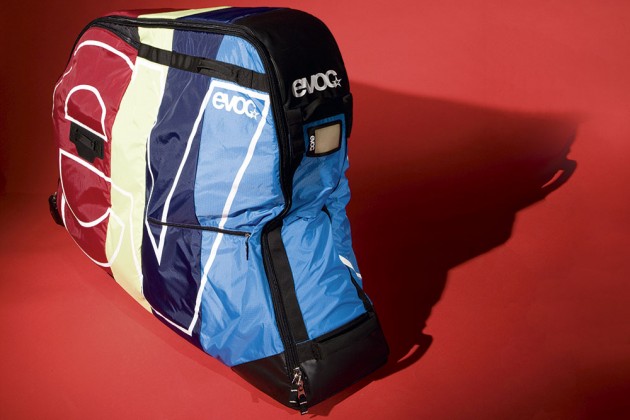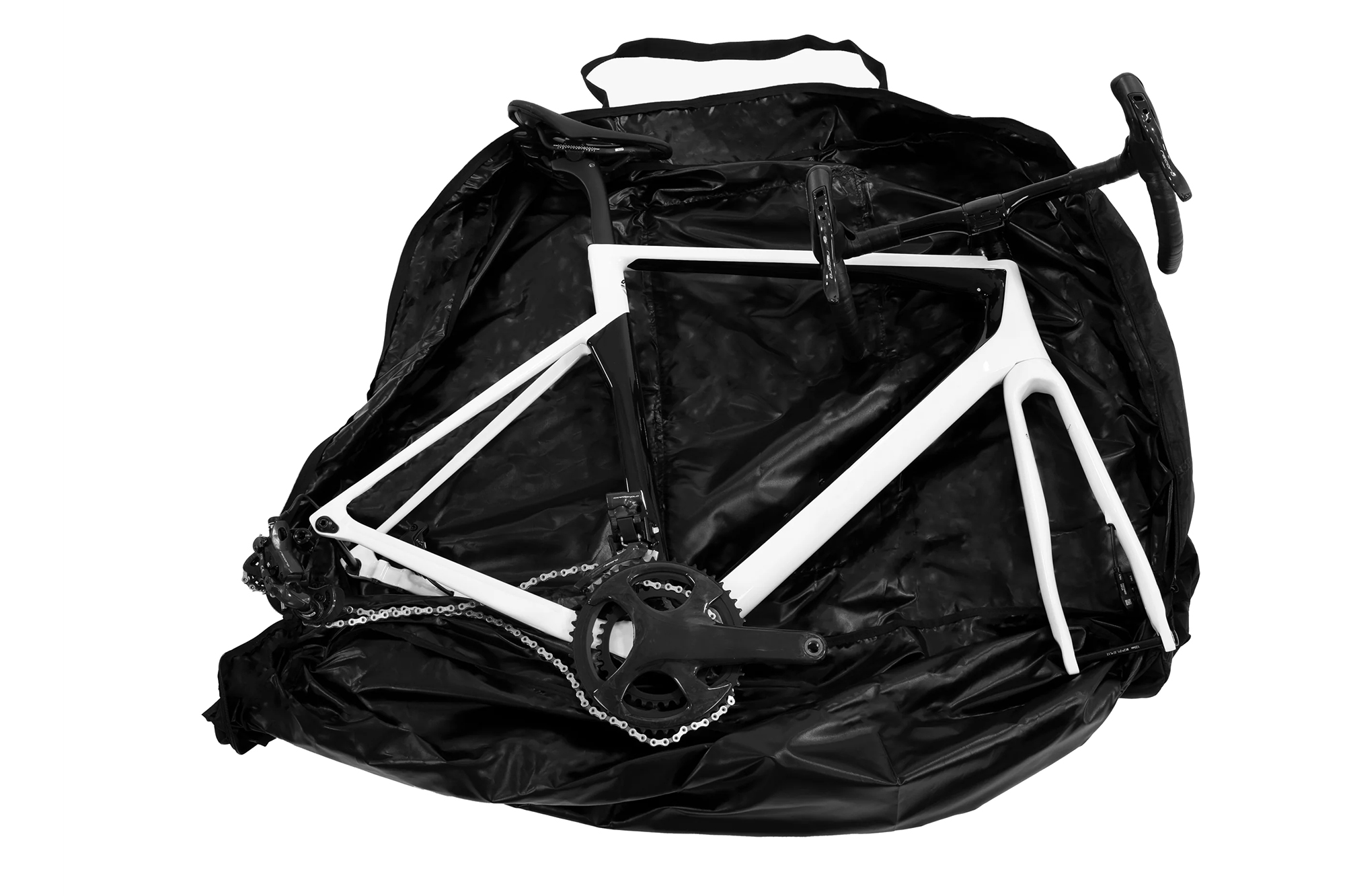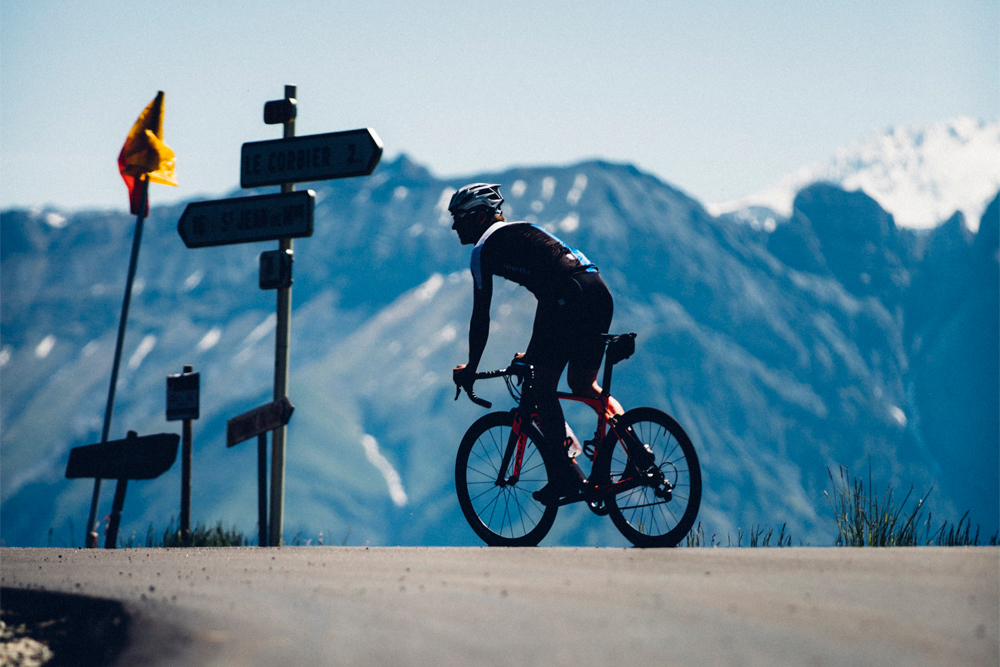Best bike bags and boxes 2025: protect and transport your bike with ease while travelling
Rest assured your bike is protected when you travel with one of these best bike bags and boxes

Exploring new roads and trails on a cycling holiday is one of the joys of two-wheeled travel. The same goes for a spot of warm-weather training, allowing you to escape the cold weather back home. However, unless you’re setting off on your bike from home, you’ll likely need to transport your bike to your destination. This is where one of the best bike bags and boxes is essential.
If you’re travelling abroad by plane, then this is an obsolete necessity. The same is likely true if you’re going by train or bus, although it’s worth checking the operator’s guidelines for travelling with a bike.. Even if you’re driving, one of the best bike bags or boxes can be a good option if you want to ensure that your favourite road or gravel bike is well protected in transit.
Choosing between a bag and a box will largely depend on three factors: your bike, your mode of travel and your budget. If your bike frame is made from steel, titanium, or aluminium, it’s less likely to suffer damage than one made from carbon, and a good-quality bag will likely suffice. A bag is also a good option for those travelling by train, bus, or car, as well as for those shopping on a budget. Boxes are more expensive and take up more space when not in use, but offer superior protection. This makes them the best option for air travel and for the best road bikes and best gravel bikes.
Fortunately, we’ve tested a number of bike bags and boxes and have selected our favourites here with the aim of helping you find the right option for you. Alternatively if you're traveling by car or van then why not check out our comprehensive guides to the best bike racks for cars and the best caravan and motorhome bike racks?
The quick list

The AeroComfort's soft exterior houses a metal structure to which you fasten your frame so it's held securely. There is very little disassembly required and as the bag is pretty light there is plenty of potential to pack extra kit inside and still be within your airline's limits.

As the Evoc Bike Bag is soft, it's light and easy to store when not in use. There is plenty of padding provided to protect your bike when it's in the bag, and the large side opening makes it simple to put the bike in place.

One of the heavier boxes available, the VeloVault2 provides very reassuring protection for your bike. Its quality construction and overall sturdiness will ensure that your lightweight carbon frame should emerge unscathed, but there might not be much weight allowance left once this gets on the scales.

Thule's RoundTrip Pro XT bike bag uses an internal frame that can also double as a workstand whilst on holiday, which is very handy. It's more of a reinforced bag than a hard case though and as such is quite pricey.

Another light option, the Orucase B2 even includes rucksack-style straps which are handy if you have packed very light. There is a fair bit of disassembly required though and it can feel a bit lopsided when wheeling it around.

Effectively a massive carrier bag for your bike, the Scicon Pocket Bike Bag is a soft and very basic bike bag ideal for putting your bike in the car or on a train. It packs down into itself and only weighs 500g/1.1oz.
Best bike bags and boxes: Our picks
Best overall

Scicon Aerocomfort 3.0 Bike Bag
Specifications
Reasons to buy
Reasons to avoid
We’ve selected the AeroComfort 3.0 from Scicon as our best overall bag for a number of reasons. It’s a breeze to use, and we found that we were able to pack our bike in as little as 15 minutes. The same is true when you arrive at your destination, with the bike easy to remove and the bag straightforward to pack down.
The knock of some bike bags is that while their soft structure makes them lighter and easy to store, it also means they can lack sufficient protection. But not so here. While the AeroComfort 3.0 is a soft fabric bag it also features an internal metal structure. SImply remove the wheels, loop the chain over a t-bar and stand your bike on the frame using the quick release skewers or thru-axles. Once in place the bike is secure and well protected, with the system having the added bonus of not requiring the handlebars to be re-positioned and keep the rear mech out of harm's way.
There’s plenty of additional padding throughout the bag and it also comes with separate pockets for the wheels and for other items, whether that’s components or items such as a pair of the best cycling shoes.
- Read our full Scicon Aerocomfort 3.0 Road Bike Travel Bag review
Best for ease of use

Evoc bike travel bag
Specifications
Reasons to buy
Reasons to avoid
The Evoc bike bag is another option for those looking for a soft bag rather than a hard case. It’s a good deal lighter than any box and far easier to pack away when it’s not in use. We also found it straightforward to use thanks to a generously wide opening and a series of velcro straps to secure the bike and its bits in place.
In terms of protection, while it can’t compete with a box, we have used the bag on several flights with no issues at all. Even the external compartments for the wheels that initially raised some eyebrows, have done their job.
The quality of the bag is superb, another important factor to consider when shopping around, with reinforced zippers and a touch exterior fabric that, so far, has proved to be hard wearing and durable.
- Read our full Evoc bike travel bike bag review
Most robust

Blue Velovault2 bike box
Specifications
Reasons to buy
Reasons to avoid
If you’re travelling aboard with an expensive carbon bike then a sturdy bike box provides you with some additional peace of mind compared to a bike bag. Take the VeloVault2.
It’s hard case design is robust and it features a long wheelbase, quality clasps and an internal design that we found spacious and easy to configure your bike within These 122x90x30cm/48x35x11.8" dimensions also mean there is plenty of room for accessories such as shoes, bike tool, etc.
Despite its impressively solid construction it weighs less than you might think, making it just light enough to escape additional charges from some airlines. We also found that the carrying handle made navigating the airport a breeze, aided by its ability to roll along with ease.
- Read our full VeloVault2 review
Most versatile

Thule Round Trip Pro XT bike bag
Specifications
Reasons to buy
Reasons to avoid
The Thule RoundTrip Pro XT is an interesting option, falling somewhere in between a bag and a box. Essentially it uses a softshell construction but with some added structural ‘implants’ that gives it a bit more rigidity and protection compared to a traditional bike bag.
While this makes it considerably lighter than a bike box it does mean that despite those added protective elements there are still a few weak areas in comparison. That said, like any bike bag, it can be internally reinforced with bubble wrap and/or cardboard if you’re using it on a flight.
A bonus feature of the RoundTrip Pro XT is that the bag comes with three detachable legs that are designed to secure to the bag’s solid base thus turning it into a workstand of sorts - handy when you need to reassemble your bike at the ‘other end’.
- Read our full Thule RoundTrip Pro XT review
Most portable

Orucase B2 Bike Travel Case
Specifications
Reasons to buy
Reasons to avoid
The B2 gets the thumbs up for the most portable bag we’ve tested. We’ve used it on domestic and international flights and loved just how easy it was to move around the airport. It features a compact shape with a rollable chassis that when combined with the bag’s impressively low weight, makes it easy to maneuver. There’s even a set of backpack straps you should require.
It’s not perfect, however. We found that packing your bike did require a degree of disassembly, which means it's not best suited to those who aren’t confident with their mechanical skills. That said, if you’re looking for a bag that’s easy to get around and can be comfortably stored away when it’s not in use, then the B2 is a solid option.
- Read our full Orucase B2 Bike Travel Case review
Best for trains and cars

Specifications
Reasons to buy
Reasons to avoid
When a bike box is unnecessary and even a larger, padded bike bag is overkill then the Pocket Bike Bag from Scicon could well fit the bill.
It’s ideally suited to shorter journeys by car, train and ferry as well as for those who need a bag to pack away into nothing once they have arrived; at 500g or 1.1lbs it really is light enough to stuff in a bikepacking bag or backpack. We’ve used it for a trip to the Tour de France, with the bag carrying our bike across the channel before it being folded away as we travelled from one tour stop to the next on two wheels.
Unsurprisingly for a bag that weighs the same as a bag of sugar it’s slightly lacking in the protection department. We’d suggest using bubble wrap to protect your frame and rear mech, for example. Still, if you want a bag for specific journeys as mentioned above and don’t want to spend a fortune on a bag, this is well worth your consideration.
Honourable mention - Best folding bike bag

Folding bikes make for great travel companions
You might wonder why you need a bag for the best folding bikes. Well, quite simply, they aren't always that light. Sure, Brompton makes some that weigh well under 10kg/22 lbs, but they can also cost well over £ 2500/$3000. So, it certainly helps to be able to carry it on your shoulder and, of course, keep it protected while you travel. In the UK, not all trains have storage by your seat, so a bag helps hide your bike away, too.
Bikes are just great tools for exploring new places, full stop. So, wouldn't it be great if you could just take your bike with you, and thats where folding bikes are really rather handy. Most of them can be carried in checked luggage at no extra cost or weight, and some can even be taken as hand luggage. Just like travelling with a full-size bike, you will want to protect it, especially in the hold.
Brompton actually makes two excellent options for their bikes. They make a bag similar to the Scicon Pocket Bike Bag, but designed for Brompton-sized bikes. This is essentially a premium carrier bag, ideal for transporting your bike in the car or carrying it to the office, and can be stored on your bike. They also offer a more sturdy suitcase-style for those looking to travel further afield with their folding bikes or even on a plane.
How we test
To test the bike bag and boxes in this guide we took them on our travels. Many of our writers and reviewers take annual trips to cover races or to escape the British weather, and they bring their bikes with them. This means that each of these products has been used in a real-world scenario be it on a plane, train or ferry.
Taking these journeys allows us not to only to evaluate the degree of protection offered by the bar or box but also to assess just how functional they are with regards to packing and unpacking, storing and getting around airports and stations
You can read more about How We Test in our full guide.
How to pack a bike bag or box

Packing the bike into the bag or box sometimes takes much more effort than expected. The process may differ slightly depending on the specific box or bag, but the general process goes something like this:
- Remove the pedals
- Partially deflate tires and remove the wheels
- Remove the seatpost and or saddle
- Remove the handlebar from the stem, or remove the handlebar and stem together from the steerer
- Undo the rear derailleur, but leave the chain intact
- Secure the frame and components in the box via the manufacturer-approved method
- Finally, don't forget to pack the tools required to rebuild the bike!
In some cases, it might be useful, especially if you are particularly worried about damage, to remove other items from your bike to ensure it fits properly in your bag. This may include computer mounts, power metres, tri bars, or extensions. Also, remember to almost certainly remove any batteries and place them in your carry-on.
How to choose a bike bag or box
Bag or Box: which is better?
The answer to this question rests entirely on your needs.
If you're travelling on a long haul flight with an expensive carbon framed bike then it makes sense to use a bike box. While they are heavy and cumbersome when it comes to out-and-out protection they can't be beaten. If you travel infrequently or don't have much room to store a box when it's not in use then hiring a box is an option.
A bike bag could be a better option for those who need something that's light, portable and easy to store. Bike bags are a good choice for train, bus and ferry journeys especially. They also make sense if you're bike is of low value or has a durable steel frame. And you can always bolster the level of protection by using bubble wrap or similar.
There is an in between option. The best bike bags tend to have some more structural inserts inside but retain more of a bag's lightweight nature. Other bike bags can have nifty, in-built storage techniques. For example, some have built-in dropouts that allow you to stand your frame upright and hold it tight.
Do I need to add extra padding to my bike bag?
Regardless of how tough your bag or box might be, you’ll definitely want to pad the important parts inside it. We’d recommend bubble wrap and foam piping. If you’re lucky, your local bike shop might have excess from all the bikes they get sent in. Don't forget to put it around the frame in places where other items in the box might rub against it.
We've used this method to safely transport a bike on two transatlantic flights, added both bubble wrap and cardboard to a softcover bike bag.

Riding in the mountains
Frequently asked questions about bike bags and boxes
Can I leave my Di2 or AXS batteries on my bike?
If you are travelling by land or sea, we see no harm in this. However, if you are travelling by air, it's worth checking with the airline, but their general guidance would be to remove them and put them in your carry-on. At the very least, you know you will have them when you reach your destination.
Will I have to pay extra for a bike bag or box?
This very much depends on the service provider and how they account for bike bags and boxes. For most airlines now, there will almost certainly be additional charges, and you will need to have sorted that before you reach the airport. For some EU train services, you will have to book ahead and won't be able to travel if you haven't, as spaces are limited. However, these generally incur much smaller charges.
For Amtrak and Via users, it is worth checking the route you wish to travel, as the rules seem much more relaxed, and services more regularly include baggage carriages.
Will my travel insurance cover my bike if its damaged?
Generally, yes, as most cover all luggage; however, the value is down to individual policy, and not all will cover excess baggage. We recommend looking at the best bicycle insurance, as these are much better tailored to dealing with these scenarios and will handle any claims made more effectively.
The latest race content, interviews, features, reviews and expert buying guides, direct to your inbox!
Like many, Matt began his bicycle industry journey on the spanners at his local bike shop. After spending his youth mountain biking, he was inspired to embrace gravel during his tenure with Evans Cycles' in-house brands, Pinnacle and Hoy Bikes. Recognising the evolving industry, Matt eagerly seized the chance to become an E-bike designer, winning several awards with the E-bike brand Cairn Cycles.
These days, Matt is likely to have a toddler sitting shotgun or off the beaten track somewhere on the South Downs.